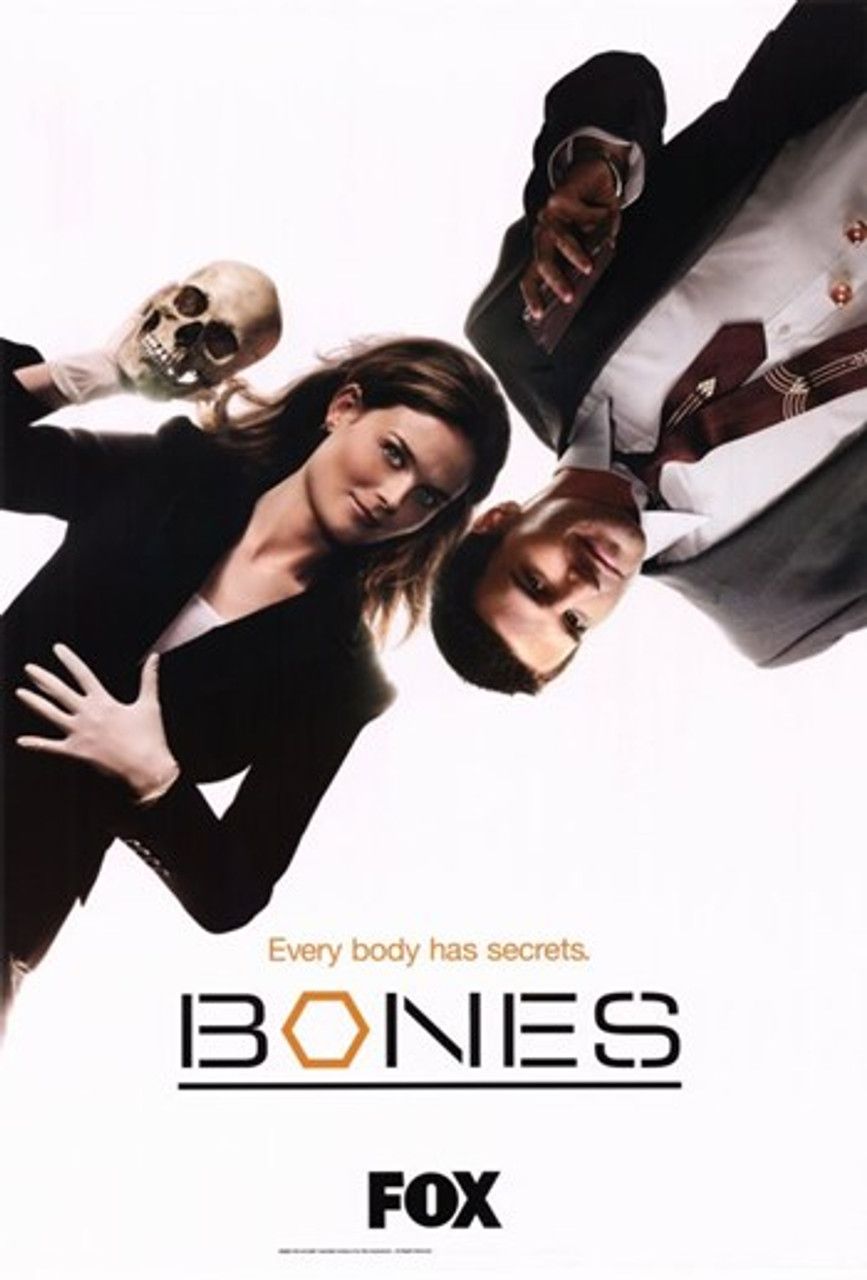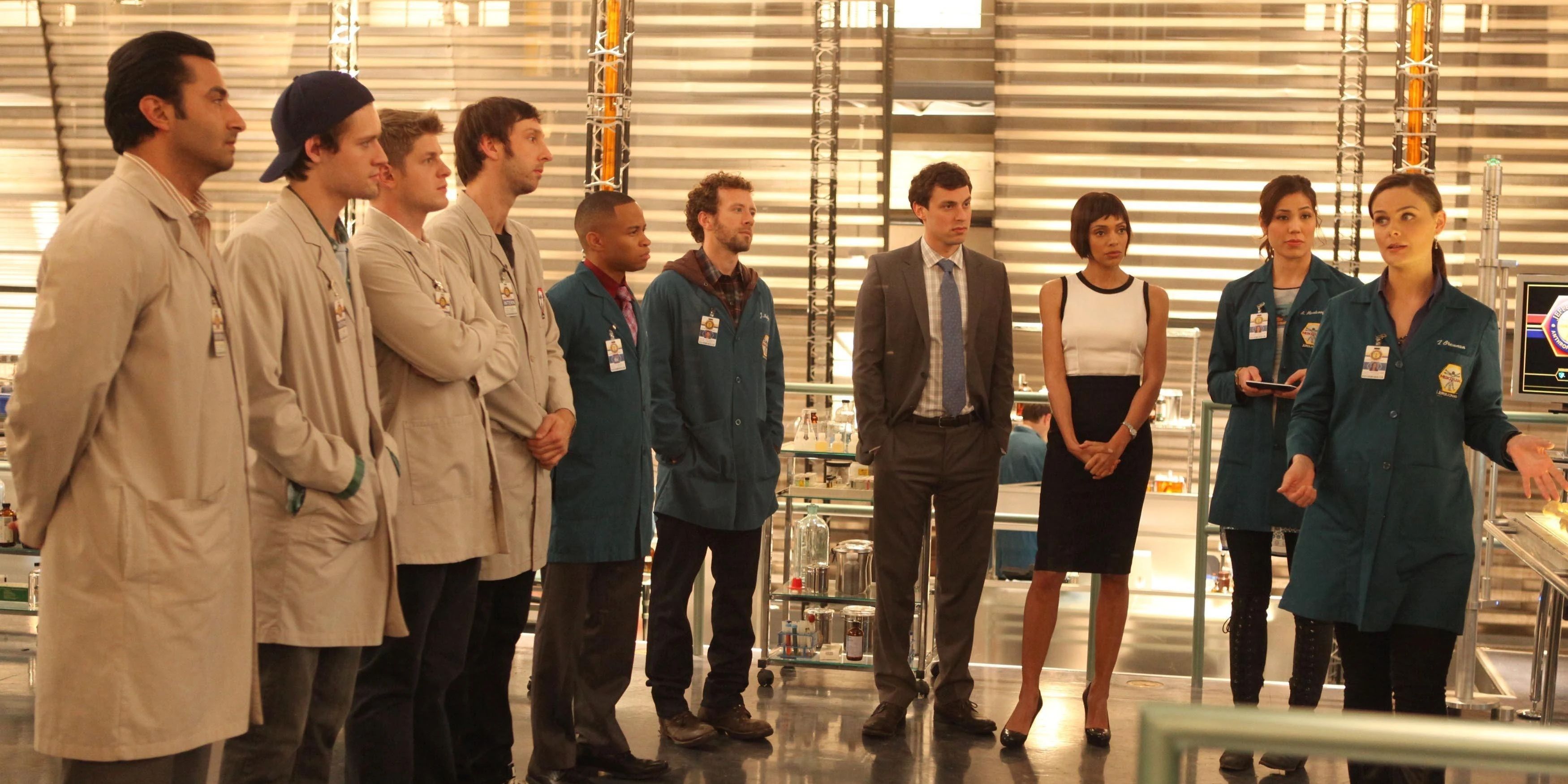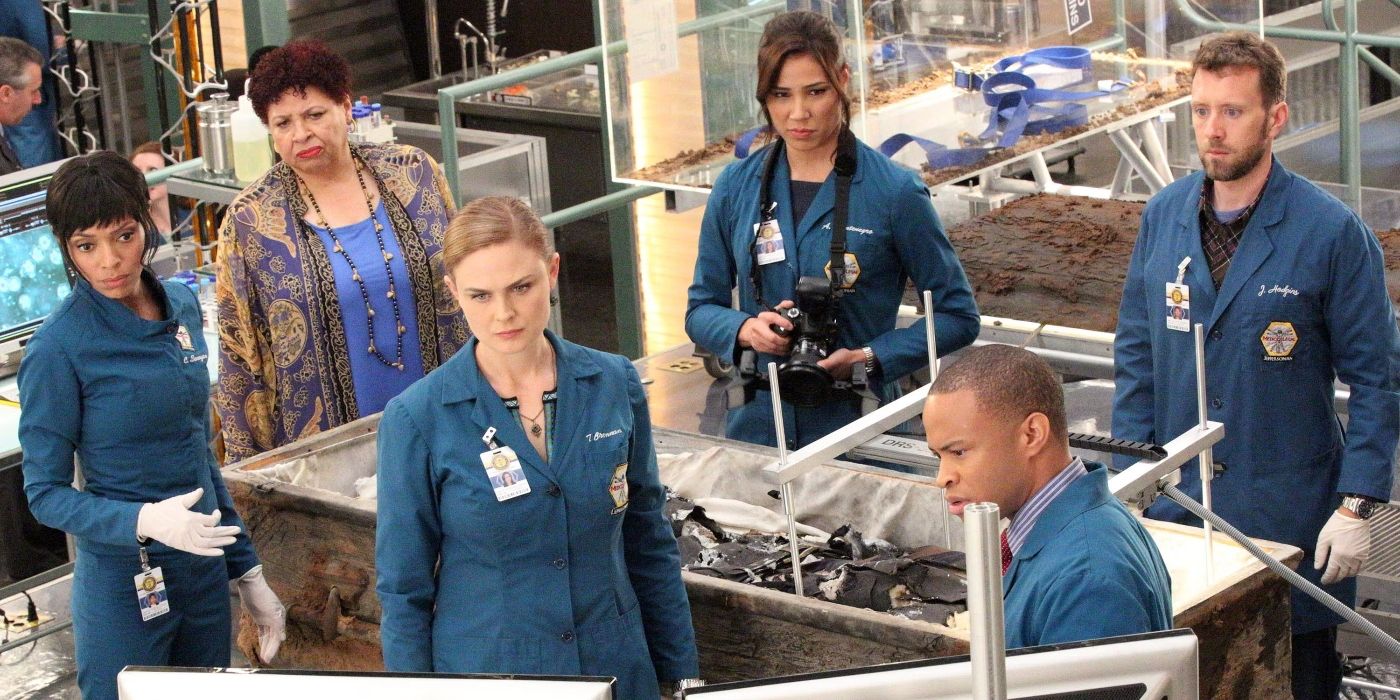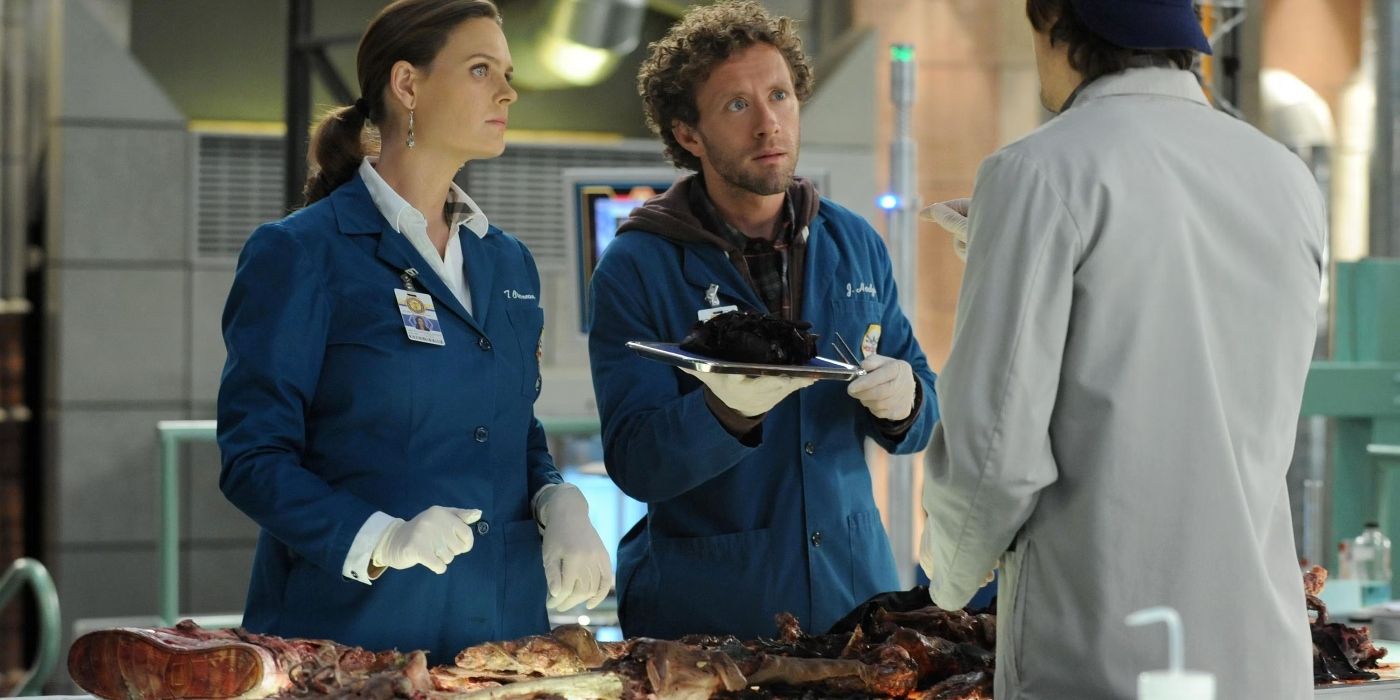How Accurate Is ‘Bones’?
The Big Picture
- Bones depicts real forensic techniques used in forensic anthropology, including DNA analysis, dental records, entomology, and cranial measurements.
- The fictional Jeffersonian Institute in Bones is based on the real collaboration between the Smithsonian Institute and the FBI.
- The concept of a body farm depicted in Bones is real, with academic institutions using donated bodies to study decomposition and aid in research.
Bones was created for the Fox network by Hart Hanson as a new take on the already thriving genre of forensic-centered police procedurals. This long-running series (12 Seasons!) was a huge fan favorite due to its well-constructed characters, romantic tension between forensic anthropologist Temperance Brennan (Emily Deschanel) and FBI Special Agent Seeley Booth (David Boreanaz), and revolting crime details. The premise for the show sprang from the groundbreaking work of forensic anthropologist and writer Kathy Reichs, whose novels about Temperance Brennan inspired the show. Reichs’ character, Temperance Brennan, worked as a forensic anthropologist at the fictional Jeffersonian Institute (more on that later) and partnered with the FBI on homicide cases involving difficult-to-identify bodies. Though Bones kept the character of Brennan and her occupation the same as in the novels, the show took a huge departure from the books in many other aspects, including Temperance’s personality and the various storylines depicted in the series. Reichs worked as a producer on the series to keep the show’s science as close to reality as possible. She also wrote some episodes and provided invaluable insights into the forensic methods used in solving crimes.
With such a scientifically sound basis for the show, it’s easy to think that everything depicted in Bones is entirely accurate. The science and casework detailed in Kathy Reichs’ book series are highly exact and far less fictionalized than in Bones, partly because Reichs relied heavily on her real-life work as a forensic anthropologist and partly because the need for dramatic effect isn’t the same in novels. She crafted thrilling mysteries based on her previous experiences and kept the forensic techniques as scientifically sound as possible. Truth and accuracy should make for as captivating a story on the small screen as in a novel, but audiences want spectacle and sizzle. Along with that comes the need to embellish and, in some cases, create elements that add dramatic effect. So, what did Bones get right?

Bones
Forensic anthropologist Dr. Temperance “Bones” Brennan and cocky F.B.I. Special Agent Seeley Booth build a team to investigate murders. Quite often, there isn’t more to examine than rotten flesh or mere bones.
- Release Date
- September 13, 2005
- Cast
- Emily Deschanel, David Boreanaz, John Boyd, Michaela Conlin, Tamara Taylor, T.J. Thyne
- Main Genre
- Crime
- Genres
- Crime, Drama, Mystery
- Rating
- TV-14
- Seasons
- 12
- Studio
- Fox
‘Bones’ Showcased Real Forensics Techniques
Bones depicts the various techniques used in forensic anthropology, which, according to the Smithsonian Institute, “involves applying skeletal analysis and techniques in archaeology to solving criminal cases.” Forensic anthropologists analyze human remains to determine identity, cause of death, and time of death. They specialize in studying hard tissues like bones and are adept at excavating buried remains. Their expertise allows them to deduce various details from the remains, such as age, sex, signs of disease or trauma, and ancestry. They use multiple techniques such as photography, X-rays, CT scans, microscopic examination, and DNA analysis to study the remains without altering them. These techniques help establish identity and understand the person’s diet and lifestyle.
One of the best instances of forensic anthropology used in Bones is in the Season 9 episode “The Dude in the Dam.” The Jeffersonian scientists use DNA analysis to establish a genetic profile and discover two genetically linked traits. Using the DNA profile along with dental records, the team can identify the victim, both of which are scientifically sound methods. In the Season 7 episode “The Memories in the Shallow Grave,” Brennan determines age and sex from the victim’s pelvis, an accurate method, and they figure out the time of death with the use of entomology by using the lifecycle of coffin flies to establish a timeline. In the Season 6 episode “The Blackout in the Blizzard,” the team introduces a very real method for establishing ancestry, discriminant function analysis of cranial measurements, to determine that the deceased is at least partially of Native American heritage.
‘Bones’ Jeffersonian Institute Is Based in Reality
The bulk of Bones takes place at the fictional Jeffersonian Institute. Yes, the Jeffersonian isn’t real, but the institute it’s based on is. The Smithsonian Institute and the FBI have a long-standing tradition of collaboration, just as the show Bones depicts. Though the degree to which they collaborate is undoubtedly fictionalized, the FBI has been seeking the help of physical anthropologists at the prestigious Smithsonian Institute since 1936.
In fact, one of the most significant contributions the Smithsonian offers is its Biological Anthropology collection, which plays a crucial role in comparative analysis. It contains over 30,000 sets of human remains with associated data, which helps develop standards for identifying sex, age, and ancestry. Forensic anthropologists at the Smithsonian have been sought out for their skills in facial reconstruction as a method of identifying victims. These experts use scientific measurements and some subjective artistry to recreate an individual’s face, so they can be more easily identified. Bones showed the real-world application of facial reconstruction in “The Memories in the Shallow Grave,” where facial reconstruction is used to identify a victim when run against pictures in a missing persons database.
The Body Farm Depicted on ‘Bones’ Is Real
In the Bones Season 6 episode “The Feet on the Beach,” a decomposed pair of feet are found along the U.S.-Canada border. All in all, eight pairs of feet are located and are determined to have floated downriver from a university in New York. Brennan gets excited because the university has a “body farm” where scientists can study body decomposition. As it happened, when the rain came through the area, the field of decaying body parts flooded, and some of the bodies managed to float away. With eight pairs of feet and seven missing bodies, it becomes clear that something is not quite right. Ultimately, the mystery of the disappeared feet is solved, and the accidental murderer confesses.
The most fascinating thing about this episode is the revelation that there actually are body farms in academic institutions. The first such facility was established by William M. Bass in 1981 at the University of Tennessee in Knoxville. Bodies are placed around the 2.5-acre wooded plot of land and left to decompose under various conditions. Students study all aspects of decay and the infestation of multiple organisms and microbes that aid in decomposition. There are currently seven such institutions across the U.S. These academic institutions rely on body donations to further their research.
Where Does ‘Bones’ Trade Scientific Accuracy for Dramatic Effect?
Bones made a tremendous effort to get the science right and succeeded in many instances. However, because Bones is a fictional show meant to enthrall viewers with scientific spectacle and endear them with character-driven narratives, the show was bound to embellish some aspects. One of the significant inaccuracies portrayed on the show is the use of the “Angelatron,” a “three-dimensional holographic reconstruction apparatus,” which, according to Kathy Reichs, does exist. However, Reichs admits that she has never been in a lab that used this kind of technology because it is highly cost-prohibitive. Until more recently, with the advancement of more impressive VR technology, this type of volumetric display technology would not have been even remotely capable of producing the images showcased in Bones.
The other thing highly embellished in Bones is not so much the show’s fault as it is the expectation audiences have for instant gratification. It is highly unrealistic that any real police work, especially with the partnership of forensic anthropologists, would wrap up as neatly and quickly as is depicted in the show. In the show, an investigation might take place over a day or two, or sometimes over a matter of hours, and the reality that scientific analysis, victim identification, crime scene details, and suspect identification could occur in that amount of time is entirely fictional. The truth is that most investigations take weeks, if not months, to conclude, and in forensic anthropology, many bodies go unidentified. The reality, however, doesn’t make for very compelling television.
Though many aspects of Bones were dramatized, the crux of the science depicted has its roots in reality. Forensic anthropologists can determine the cause of death, victim identity, age, sex, and heritage through skeletal analysis. Moreover, the show introduced viewers to an aspect of forensic investigation they had not seen before. It showcased a lesser-known scientific discipline in a compelling and thought-provoking way. Thanks to the multi-talented Kath Reichs’ oversight, the show held on to the science-driven aspects of her genius Temperance Brennan book series. Even though there are aspects of Bones that we can all agree are fictional, the show does an excellent job of portraying actual science and highlighting the authentic collaboration between law enforcement and forensic anthropologists in the real world.
Bones is available to stream on Prime Video in the U.S.
WATCH ON PRIME VIDEO
#Accurate #Bones



